#ancient roman mythology
Text
I love you people going into "useless" fields I love you classics majors I love you cultural studies majors I love you comparative literature majors I love you film studies majors I love you near eastern religions majors I love you Greek, Latin, and Hebrew majors I love you ethnic studies I love you people going into any and all small field that isn't considered lucrative in our rotting capitalist society please never stop keeping the sacred flame of knowledge for the sake of knowledge and understanding humanity and not merely for the sake of money alive
#classics#mythology#ancient greek mythology#ancient roman mythology#comparative literature#latin#hebrew#ethnic studies#fuck capitalism#communism#i love my useless degree idc#academia#university#dark academia#Greek#philosophy#liberal arts#humanities#women and gender studies#cultural anthropology
36K notes
·
View notes
Text

The Furies, in Ancient Roman mythology, were three sister goddesses that inhabited the underworld, and inflicted retribution against those who have committed crimes against morality or the gods
#the furies#fates and furies#female furies#furies#vengance#divine retribution#retributive justice#roman empire#roman mythology#roman gods#roman goddess#underworld#ai artwork#mythology and folklore#classical mythology#mythology#mythological#ancient roman mythology#ancient rome#ancient religion#pagan gods#paganism#roman paganism
5 notes
·
View notes
Text
I am sad to report that I, too, have fallen trap to the Roman empire. It crosses my mind at least 13 times a day. Or at least, that is on a day where I take breaks from thinking about it at all. I think of Rome and Greece so often that my Pinterest is entirely old statues and paintings. The amount of time I have scoured the internet for references to Iphis outside of Metamorphoses is shameful. Literally right now I am taking a break from creating a screenplay adaptation of the Thebaid. And prior to that, I was making phone wallpaper collages of Icarus, Achilles, and other figures.
HELP ME!!!
#ancient rome#roman empire#ancient greece#myth#ancient greek mythology#ancient roman mythology#greek mythology#roman mythology#iphis#collage#thebaid#ovid's metamorphoses#achilles#icarus
6 notes
·
View notes
Text

Jupiter, Jeu de la Mythologie Etchings 1601-1700
From the New York Public Library.
#art#jeu de le mythologie#jupiter#theoi#stefano della bella#aesthetic#dark academia#light academia#academia aesthetic#french#frenchblr#Français#ancient greek mythology#ancient roman mythology#mythology
6 notes
·
View notes
Text
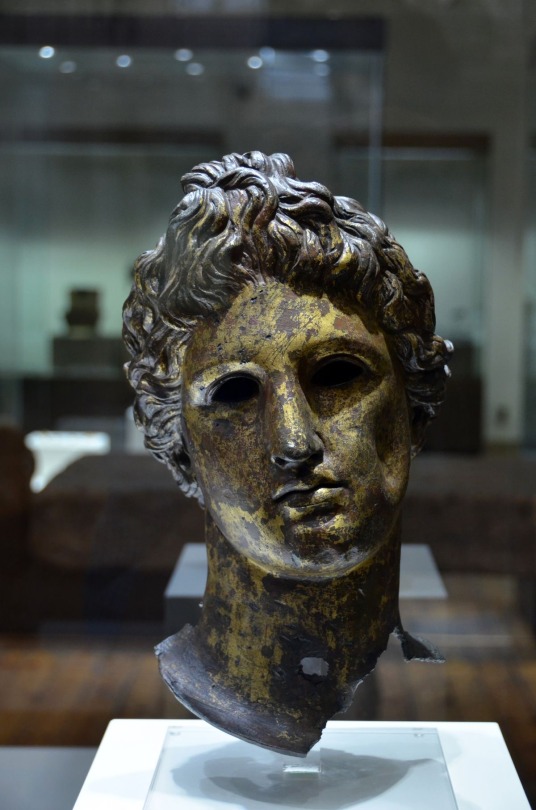
Roman period Head of Apollo
#apollo#ancient rome#art#gods#roman#roman mythology#religion#history#europe#european#thrace#thracian#serdica#serdika#sofia#bulgaria#archaeology#bulgarian#museum#olympian#deity#deities#greek mythology#mythology#olympians
3K notes
·
View notes
Text

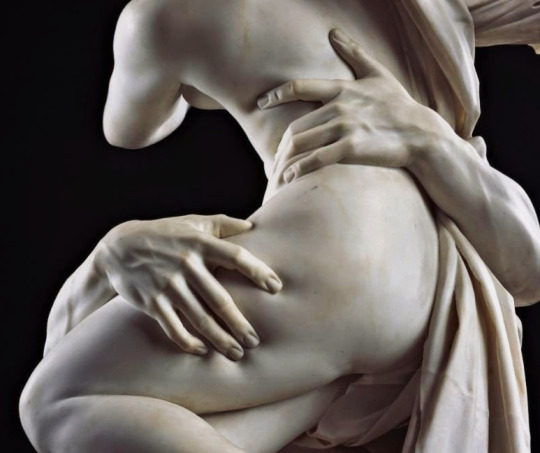

The abduction of Proserpina, Gian Lorenzo Bernini, 1621-22
#art history#art#italian art#baroque#aesthethic#marble#sculpture#greek mythology#roman mythology#proserpina#persephone#hades#gian lorenzo bernini#bernini#galleria borghese#ancient greece#pluton#17th century
2K notes
·
View notes
Photo
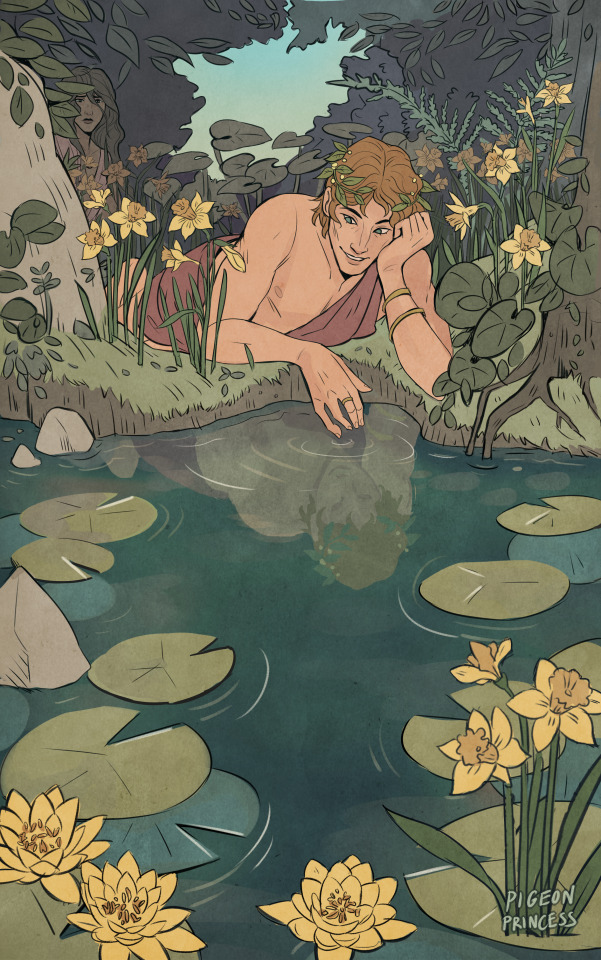
As punishment for his cruel rejection of the nymph Echo, Nemesis cursed Narcissus to fall in love with his own reflection in a pool of water. Unable to take his eyes away from the beautiful youth he did not recognise as himself, Narcissus stayed by the side of the water until he wasted away.
I’ve been wanting to draw more mythology pieces for a while now! Here is my interpretation of Echo and Narcissus, a Roman myth from Ovid's Metamorphoses.
#Roman mythology#roman myths#Narcissus#Narcissus and Echo#Echo#mythology#myths#greek mythology#greek myths#Ovid#ancient rome#pigeon princess#my art#this was a lot of fun to draw#illustration
5K notes
·
View notes
Text
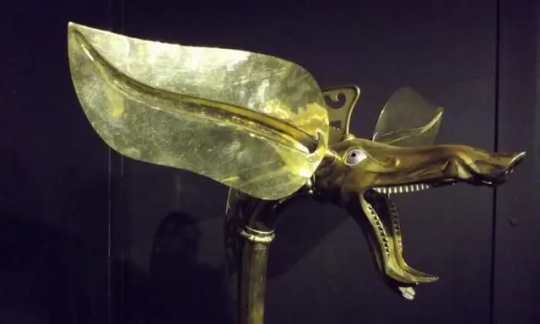

The 'Carnyx' Nightmare of the Roman Soldiers
The Carnyx was a brass musical instrument used as a psychological weapon of war by the ancient Celts between 300 BC and 200AD in western and central Europe and beyond.
The carnyx was once widespread throughout much of Europe, although only a dozen or so fragments are known to us.
It was carried by bands of Celtic mercenaries; it was present at the attack on the Greek sanctuary at Delphi in 279 BC; it defied Julius Caesar in Gaul; and it faced Claudius when he invaded Britain. They are even shown on a Buddhist sculpture in India, proof of the far-flung connections of the Iron Age world.
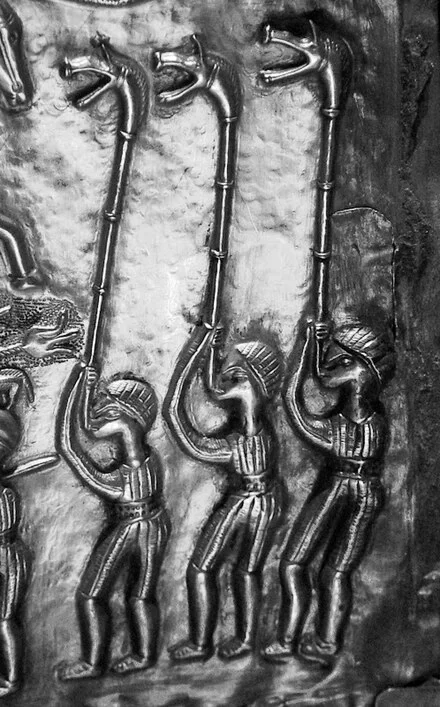
However, they were not only used by the Celts; they were also used by the Dacians in modern Romania. The term “Celtic” is a complicated one. The concept of a pan-European Celtic culture is a myth; rather, aspects of art and technology were shared across vast distances by diverse cultures. The carnyx was one example of this.
A 12-foot-long, thin bronze tube with right-angle bends on both ends made up the carnyx. The lower end ended in a mouthpiece, and the upper end flared out into a bell that was usually decorated to look like a wild boar’s had. Historians believe it had a tongue that flapped up and down, increasing the noise made by the instrument. The carnyx was played upright so that the boar’s head bell protruded well above the warriors’ heads. Its primary goal was to create more noise and confusion on the battlefield.
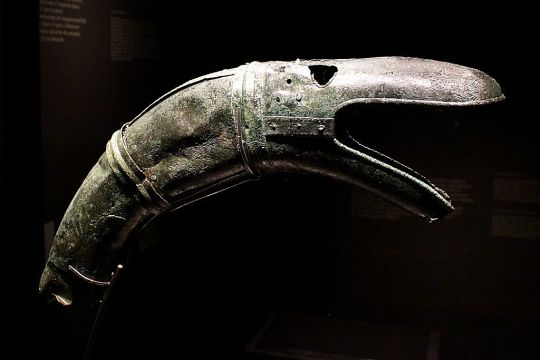
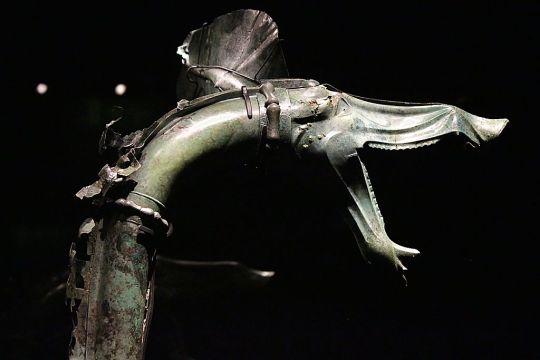

The Greek historian Polybius (206-126BC) was so impressed by the clamor of the Gallic army and the sound of the carnyx, he observed that “there were countless trumpeters and horn blowers and since the whole army was shouting its war cries at the same time there was such a confused sound that the noise seemed to come not only from the trumpeters and the soldiers but also from the countryside which was joining in the echo”.
And the Roman historian Diodorus Siculus wrote, “Their trumpets are also of a peculiar and barbaric kind which produce a harsh, reverberating sound suitable to the confusion of battle.”
Archaeologists discovered a hoard of ritually destroyed weapons in 2004, including a dozen swords, scabbards, spearheads, a shield, bronze helmets, an iron helmet shaped like a swan, a cauldron, animal remains, and seven carnyces. Before the Tintignac discovery, the remains of only five actual carnyces had been found.
The finest was unearthed in Deskford, Scotland in 1816. The Deskford carnyx only has the boar’s head bell and is missing the mane, tongue, and tubing. Images of Carnyx players have been found as well. A Roman denarius, dating from 48 BC bears a representation of a Carnyx. Three carnyx players are featured prominently on the Gundestrup Cauldron, which was found in a Danish peat bog.
One of the seven found at Tintignac, on the other hand, was almost entirely complete. The Tintignac Carnyx was broken into 40 pieces. When puzzled back together, it was found to be just an inch short of six feet long with a single missing section of the tube. The bell was a boar’s head with protruding tusks and large pointed ears. Once restored, the Tintignac Carnyx proved to be the first virtually complete carnyx ever found.
By Leman Altuntaş.
Music video by John Kenny.
#The Carnyx#The 'Carnyx' Nightmare of the Roman Soldiers#Iron Age war trumpet#ancient artifacts#archeology#archeolgst#history#history news#ancient culture#ancient civilizations#celtic mythology#celtic history#roman history#roman empire#roman legion
2K notes
·
View notes
Text

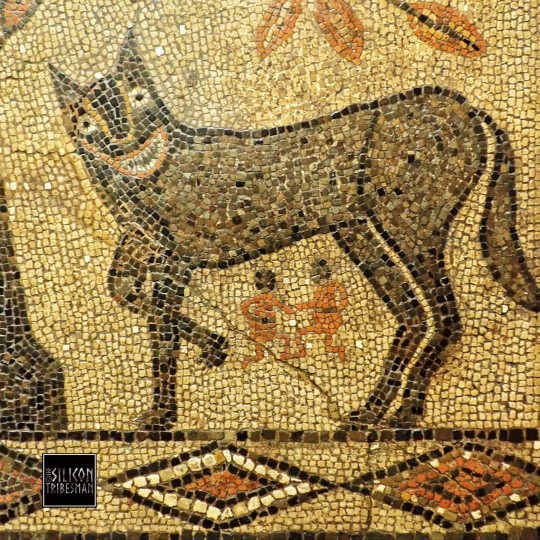

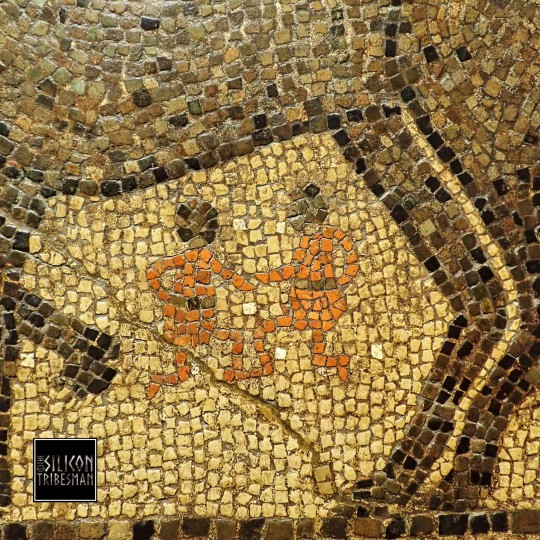
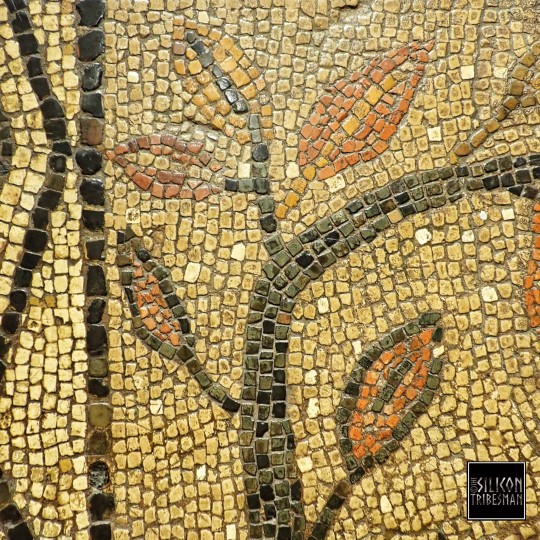
The Wolf and Romulus and Remus Mosaic, Roman Aldborough, North Yorkshire, 300-400CE, Leeds City Museum.
This panel formed the centrepiece of a large mosaic floor constructed in the Roman town of Isurium Brigantum, now Aldborough in North Yorkshire. The mosaic depicts the legend of Romulus and Remus. They were abandoned in the River Tiber but washed ashore where they were fed by a she-wolf.
#romulus and remus#she wolf#roman#roman myth#romans#roman culture#roman villa#roman mosaic#roman craft#roman britain#ancient living#ancient craft#ancient cultures#relic#archaeology#artefact#roman empire#mythology#roman living
805 notes
·
View notes
Text

#hermes worship#hermes#mercury#hermes god#ancient greek god#greek god#coin#greek myth#greek myth art#ancient greek mythology#greek mythology#ancient greek coin#roman coin#medieval coin
2K notes
·
View notes
Text

Menelaus Carrying the Body of Patroclus or Ajax Carrying the Body of Achilles, 1st century AD, Roman copy after a Hellenestic bronze (ca. 200-150 BC), with modern restorations, marble, Loggia dei Lanzi, Florence.
#sculpture#art history#patroclus#achilles#menelaus#ajax#mythology#greek mythology#greek art#ancient greece#roman art#marble#florence
1K notes
·
View notes
Text
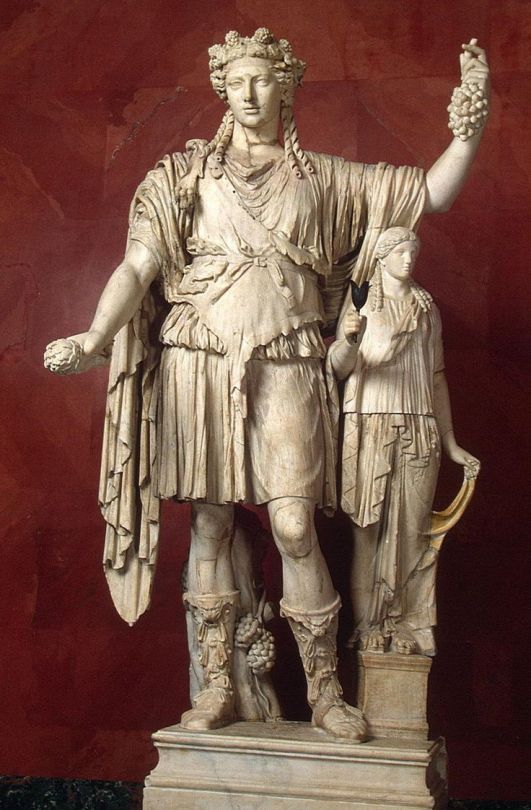
Roman marble statue of Dionysus (Bacchus), God of wine, patron of wine making.
Roman copy of a Greek original of late 4th century BC.
from The Collection of The Hermitage, St Petersburg
#roman art#dionysus#bacchus#marble statue#art history#ancient art#ancient artifacts#antiquities#antiquity#ancient rome#roman history#roman empire#roman republic#rome#greek art#greek mythology
430 notes
·
View notes
Text

The Bacchante
c. 1853
Artist : Jean Léon Gérôme
#jean léon gérôme#bacchante#maenad#classic art#mythologie#mythology#greek mythology#ancient greek#thiasus#bassarids#bacchae#bacchantes#bacchus#dionysus#dionisos#roman mythology#mimallones#klodones#thyiades#potniades#mythological#dionysios#1850s#1853#supernatural
989 notes
·
View notes
Text
Black dreams; the pale and sorrowful desire
Whose eyes have looked on Lethe and have seen,
Deep in the sliding ebon tide serene,
Their own vain light inverted; the vain lyre
That only tells of love and languishing;
Autumnal roses blind with rain; slow foam
From desert-sinking seas, with honeycomb
Of aconite and poppy—these I bring
With this my bitter, barren love to thee;
And from the grievous springs of memory,
Far in the great Maremma of my heart,
I proffer thee to drink; and on thy mouth,
With the one kiss wherein we meet and part,
Leave fire and dust from quenchless leagues of drouth.
Ave Atque Vale by Clark Ashton Smith
#ave atque vale#clark ashton smith#poetry#quote#literature#aesthetic#dark academia#dead academia#greek mythology#roman mythology#ancient greek mythology#ancient roman mythology#original post#dark things#lethe
7 notes
·
View notes
Text

Head of Dionysus, the god of wine, uncovered in an archaeological dig in the ancient city of Aizanoi, Turkey
#dionysus#head#bust#sculpture#mythological#mythology#god#wine#archaeology#art#history#ancient#ancient greek#ancient greece#greek mythology#greek#greece#ancient roman#roman
20K notes
·
View notes
Text

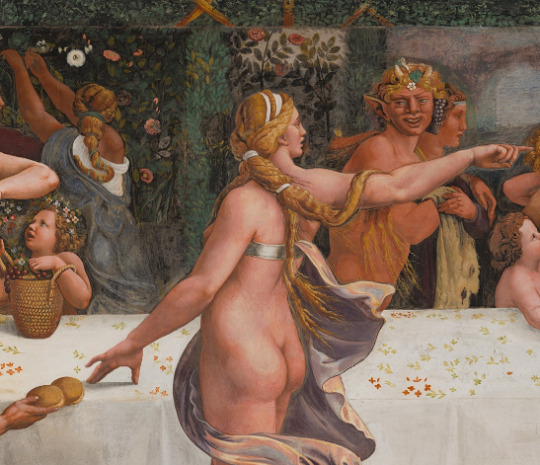

Details from the room of Cupid and Psyche in Palazzo Te, Giulio Romano, 1526-28
#art history#art#italian art#aesthethic#greek mythology#ancient greece#roman mythology#giulio romano#frescoes#palazzo te#mantua#mantova#cupid#psyche#cupid and psyche#zeus#olympias#banquet#bacchanalia#faun#16th century#rinascimento
471 notes
·
View notes